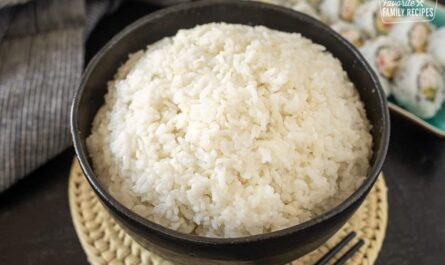When it comes to crafting perfect sushi, the question of using a sushi rice mold vs hand shape often arises. For those new to sushi-making, choosing between these two methods can be both exciting and daunting. Whether you are a home cook looking to impress your guests or a sushi aficionado curious about the artful nuances of sushi preparation, understanding the pros and cons of each approach is essential.

The Art of Sushi Making
Sushi is not just food; it’s an art form with centuries of history embedded in its preparation. Today, sushi culture has spread globally, attracting diverse fans who are eager to try their hands at making sushi at home. Central to this process is the technique used for shaping the sushi rice.
Understanding Sushi Rice Mold
What is a Sushi Rice Mold?
A sushi rice mold is a tool designed to shape rice into consistent sizes and shapes quickly. Molds are often made from plastic or wood and come in various shapes, including rectangles and squares. One of the compelling aspects of using a mold is the convenience and uniformity it offers, making it easier for beginners to achieve restaurant-quality presentation.
Looking for more ways to perfect your sushi-making skills at home? Explore different types of rice to understand which works best for sushi.
Advantages of Using a Mold
The notable advantage of a sushi rice mold is consistency. Each sushi piece is identical in size and shape, creating an aesthetically pleasing presentation. This uniformity is especially beneficial if you’re preparing a platter for a dinner party or restaurant setting.
In addition, molds can speed up the sushi-making process, which is advantageous for those who are short on time or new to sushi preparation. With practice, even those unfamiliar with sushi could produce decent-looking pieces.
Drawbacks of Using a Mold
However, the use of molds does come with its set of challenges. The main disadvantage is the loss of the authentic touch found in traditionally hand-shaped sushi, where the texture and feel of the rice inform the sushi chef when to stop pressing the rice to prevent it from becoming too compact.
Moreover, relying solely on a mold could be limiting for those looking to express creativity through varied sushi forms, as molds offer only a predetermined shape.
The Art of Hand-Shaping Sushi
Why Hand-Shaping is a Timeless Technique
Hand-shaping, often referred to as tezu, holds tradition and technique at its core. This method has been the go-to for professional sushi chefs for countless generations, where it’s not just about shaping rice but building a connection with the texture, stickiness, and moisture level inherent in sushi rice.
Advantages of Hand-Shaping
The main advantage of hand-shaping is its authenticity. Handcrafting sushi allows for a personal touch, where each piece is a unique work of art. This technique celebrates the subtle nuances of sushi craft and offers room for creativity and traditional skills.
By exploring the crafting techniques used by sushi chefs, enthusiasts can better appreciate the significance of selecting the perfect pots for sushi rice to ensure ideal texture and flavor.
The Challenges of Hand-Shaping
Despite its merits, hand-shaping sushi rice can be strenuous for beginners. It requires practice, patience, and a certain level of intuition and skill. The consistent practice is necessary to ensure the rice holds together, is not too dense, and maintains the delicate balance of flavors.
Sushi Rice Mold vs Hand Shape: The Flavor Factor
While the shaping method plays a crucial role in presentation, it also influences flavor and texture. Molds can sometimes compress rice too tightly leading to a chewy texture, whereas hand-shaping can achieve a looser, airier formation lending to a more balanced bite of sushi.
Choosing Your Method
Consider Your Skill Level
If you are new to sushi-making, starting with a mold might boost your confidence by providing consistent results, whereas experienced cooks or those eager to learn traditional methods may enjoy the challenge of hand-shaping.
Plan for Practice
Irrespective of your choice, practice is vital. Embrace the art of making sushi ricebe it through soaking rice properly or learning the perfect texture for your sushi style.
Prioritize Freshness
Regardless of the shaping technique, the final product’s quality heavily depends on the freshness of the ingredients. Sourcing top-quality sushi-grade fish and the right type of rice can transform your culinary endeavor.
Expanding Your Skills
As your skills grow, consider the different rolls you can create by experimenting with both methods. Understanding the roles of each can enhance your overall sushi experience.

FAQ
Is one method more traditional than the other?
Hand-shaping is traditionally more revered due to its historical significance and alignment with authentic skill, though both methods have their place.
Can I use a rice mold for all sushi types?
The rice mold is particularly suitable for nigiri. However, for rolls like maki or temaki, hand-rolling remains the preferred choice.
Does using a mold compromise taste?
Using a mold more impacts texture than taste. Properly cooked and seasoned rice should maintain taste irrespective of how its shaped.
With each method offering unique advantages and styles for sushi presentation, enthusiasts have the opportunity to develop their skills through exploration and practice, enjoying the myriad ways to delight in sushi making.
This article contains affiliate links. We may earn a commission at no extra cost to you.




